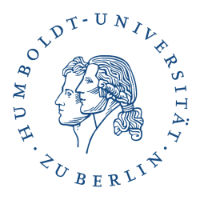预约演示
更新于:2025-08-23
Plantazolicin(Humboldt-Universität zu Berlin)
更新于:2025-08-23
概要
基本信息
非在研机构- |
权益机构- |
最高研发阶段临床前 |
首次获批日期- |
最高研发阶段(中国)- |
特殊审评- |
关联
100 项与 Plantazolicin(Humboldt-Universität zu Berlin) 相关的临床结果
登录后查看更多信息
100 项与 Plantazolicin(Humboldt-Universität zu Berlin) 相关的转化医学
登录后查看更多信息
100 项与 Plantazolicin(Humboldt-Universität zu Berlin) 相关的专利(医药)
登录后查看更多信息
30
项与 Plantazolicin(Humboldt-Universität zu Berlin) 相关的文献(医药)2025-08-01·INTERNATIONAL JOURNAL OF FOOD MICROBIOLOGY
Combined efficacy of Bacillus amyloliquefaciens CIM95 and melatonin in reducing anthracnose in strawberries (Fragaria × ananassa Duch.) by enhancing antioxidant activity and defense-related genes
Article
作者: El-Shaboury, Gamal Awad ; Al-Asmari, Fahad ; Alahmari, Layla A ; Zulfiqar, Faisal ; İzgü, Tolga ; Al-Huqail, Arwa Abdulkreem ; Alghanem, Suliman Mohammed Suliman ; Moosa, Anam ; Alzamel, Nurah M ; Alshehri, Dikhnah
Anthracnose caused by Colletotrichum acutatum causes substantial losses in yield and fruit quality. This study aimed to investigate the combined effect of Bacillus-derived lipopeptides (LPs) and melatonin (MLT) on the suppression of anthracnose in strawberries. Compared with the control, ten different Bacillus species were screened for their antifungal activity in vitro, with Bacillus amyloliquefaciens CIM95 resulting in the greatest colony growth inhibition of C. acutatum, followed by B. subtilis LLCG89. LPs were extracted from the two strains, CIM95 and LLCG89, where CIM95 resulted in greater colony growth inhibition of the pathogen. Liquid chromatography time of flight mass spectrometry (LC-TOF/MS) analysis of CIM95 revealed the presence of eight different LPs; surfactin, bacillibactin, bacillaene, fengycin, bacillomycin D, bacilysin, iturin, and plantazolicin. The application of MLT on strawberry fruit at different concentrations revealed that the 5 mM concentration resulted in the lowest lesion diameter and disease incidence of anthracnose in strawberry fruit. Our findings revealed that, compared with individual application or no treatment, combined treatment with CIM95 LPs and MLT reduced the disease incidence and lesion diameter of the pathogen on strawberry fruit. Furthermore, CIM95 LPs and MLT presented the greatest increase in the levels of key antioxidant enzymes, viz., SOD, POD, CAT, PPO, PAL, APX, CHI, and GLU. Additionally, the expression of PR1, PR5, PPO, GLU APX, CAT, PAL, NPR1, GST, and CH-1 was up upregulated till 48 h and subsequently decreased to 96 h. These results suggest that the combination of CIM95 LPs and MLT represents a sustainable and eco-friendly approach for managing anthracnose in strawberries.
2025-08-01·MICROBIAL PATHOGENESIS
Probiogenomic insights into Bacillus velezensis MFSS1 for controlling aquaculture pathogens
Article
作者: Abdul Malek, Ahmad Zuhairi ; Mohd Hashim, Amalia ; Mustafa, Shuhaimi ; Sam-On, Muhamad Firdaus Syahmi
Bacillus velezensis MFSS1 (previously known as B. subtilis FS6) was reported to have good probiotic criteria and antibacterial activity against Vibrio spp. and Aeromonas spp., through phenotypic analysis. However, whole genome sequencing is required for commercialising a new probiotic, especially due to reports on probiotics that can cause horizontal gene transfer towards the host microbiome. Therefore, this study aims to investigate the comprehensive genomic characteristics of B. velezensis MFSS1, focusing on its antimicrobial genes against aquaculture pathogens, its probiotic traits, and safety assessment. The bacterial genome was sequenced using Oxford Nanopore sequencing, resulting in 7 contigs with a total length of 3,914,361 base pairs and an average G + C content of 46.58 %. The analysis using ContEst16S and average nucleotide identity revealed that the bacterium previously reported as B. subtilis is actually B. velezensis. Additionally, secondary metabolites against pathogens were predicted using the antiSMASH website, which identified eight secondary metabolites: Bacillibactin, Bacilysin, Surfactin, Difficidin, Fengycin, Bacillaene, Macrolactin H, and Plantazolicin. Furthermore, several probiotic markers were detected, functioning in acid tolerance, bile salt tolerance, adhesion, osmotic stress, and intestinal persistence during the delivery of the bacteria to the host. Interestingly, the in silico safety assessment of the bacterium revealed a lack of 96 antibiotic resistance genes and confirmed it as non-pathogenic to humans, compared with genomic bacteria from ATCC. The study indicates that B. velezensis MFSS1 is a good probiotic through genomic analysis and can be commercialised to control aquaculture pathogens and reduce reliance on antibiotics.
2025-08-01·Data in Brief
Draft genome sequence of Bacillus safensis 2T-2, isolated from drinking water
Article
作者: Molale-Tom, Lesego G ; Kritzinger, Rinaldo K ; Bezuidenhout, Cornelius C ; Olanrewaju, Oluwaseyi Samuel
Bacillus safensis 2T-2 was isolated from potable water at a municipal water treatment facility in the North West province of South Africa, representing the first report of this species in treated drinking water systems. Whole genome sequencing revealed a 3.78 Mb genome with 41.3 % GC content and 4000 coding sequences distributed across 126 contigs. Genome analysis identified six antibiotic resistance genes, including vancomycin resistance genes (vanT, vanY), fosfomycin resistance (fosBx1), chloramphenicol resistance (cat86), and two disinfectant resistance genes (qacG, qacJ). Despite the presence of resistance genes, PathogenFinder analysis confirmed low pathogenic potential (0.168 probability). The strain demonstrated significant biosynthetic capabilities with 12 secondary metabolite gene clusters, including antimicrobial compound production (plantazolicin), biosurfactants (lichenysin), siderophores (bacillibactin, schizokinen), and the lipopeptide fengycin. Five bacteriocin gene clusters were identified, containing three core peptide genes (UviB, plantazolicin, pumilarin) with associated modification and transport genes. Phylogenetic analysis positioned strain 2T-2 closest to B. safensis F0-36b, confirming species identification. These findings highlight the dual nature of environmental bacteria in water systems, possessing both concerning antibiotic resistance traits and beneficial biotechnological potential, emphasizing the need for enhanced water treatment strategies while revealing opportunities for bioactive compound discovery.
100 项与 Plantazolicin(Humboldt-Universität zu Berlin) 相关的药物交易
登录后查看更多信息
研发状态
10 条进展最快的记录, 后查看更多信息
登录
| 适应症 | 最高研发状态 | 国家/地区 | 公司 | 日期 |
|---|---|---|---|---|
| 革兰氏阳性细菌感染 | 临床前 | 德国 | - |
登录后查看更多信息
临床结果
临床结果
适应症
分期
评价
查看全部结果
| 研究 | 分期 | 人群特征 | 评价人数 | 分组 | 结果 | 评价 | 发布日期 |
|---|
No Data | |||||||
登录后查看更多信息
转化医学
使用我们的转化医学数据加速您的研究。
登录
或

药物交易
使用我们的药物交易数据加速您的研究。
登录
或

核心专利
使用我们的核心专利数据促进您的研究。
登录
或

临床分析
紧跟全球注册中心的最新临床试验。
登录
或

批准
利用最新的监管批准信息加速您的研究。
登录
或

生物类似药
生物类似药在不同国家/地区的竞争态势。请注意临床1/2期并入临床2期,临床2/3期并入临床3期
登录
或

特殊审评
只需点击几下即可了解关键药物信息。
登录
或

Eureka LS:
全新生物医药AI Agent 覆盖科研全链路,让突破性发现快人一步
立即开始免费试用!
智慧芽新药情报库是智慧芽专为生命科学人士构建的基于AI的创新药情报平台,助您全方位提升您的研发与决策效率。
立即开始数据试用!
智慧芽新药库数据也通过智慧芽数据服务平台,以API或者数据包形式对外开放,助您更加充分利用智慧芽新药情报信息。
生物序列数据库
生物药研发创新
免费使用
化学结构数据库
小分子化药研发创新
免费使用
